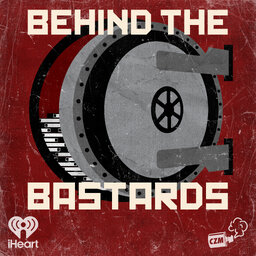Part One: The Bastards of Forensic Science
Forensic Science is supposed to provide perfect certainty in the most serious criminal cases. What if it's all a bunch of bullshit? Robert sits down with Dr. Kaveh Hoda to talk about all the myriad cons in forensic "science.”
 Behind the Bastards
Behind the Bastards


